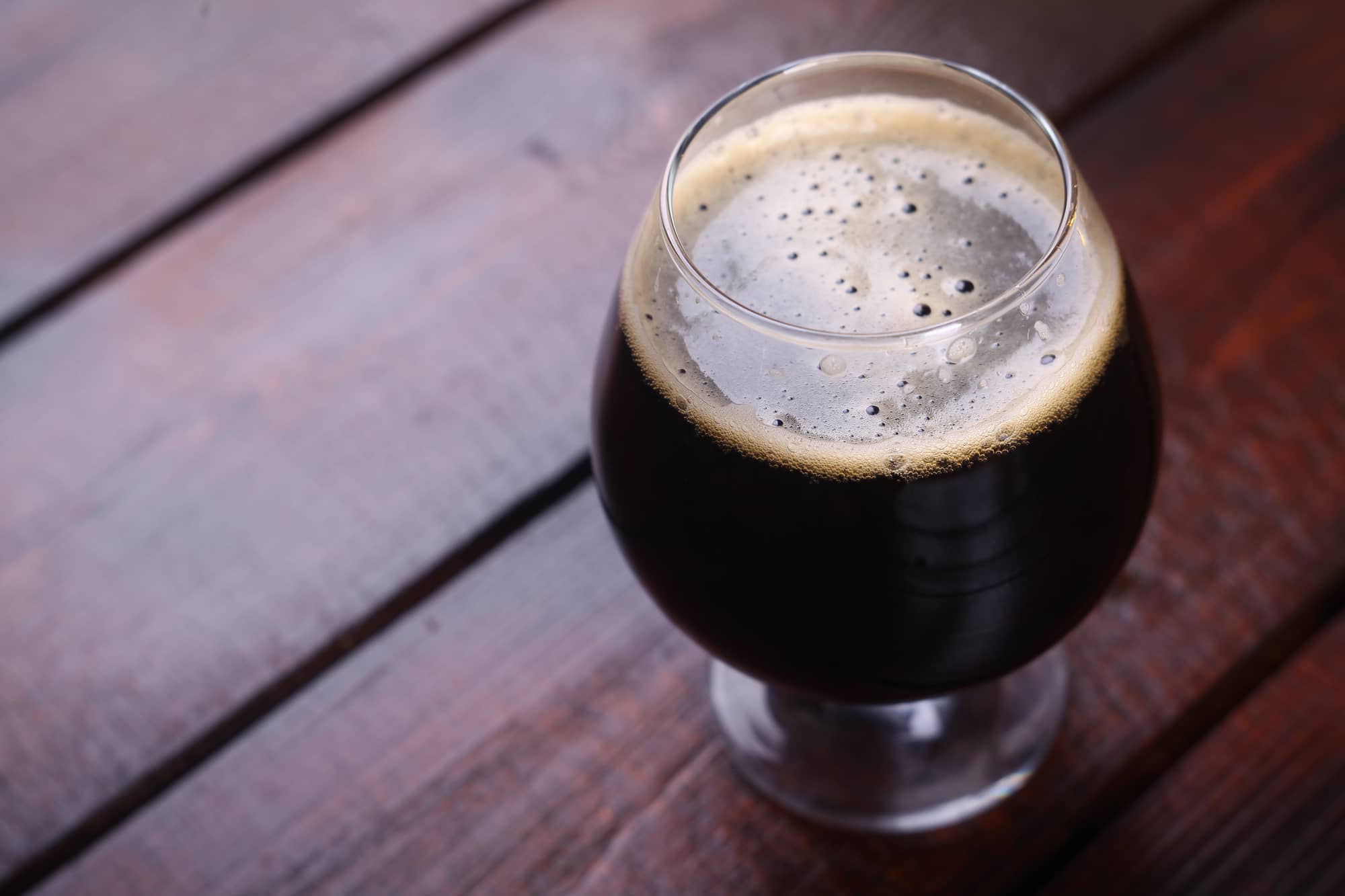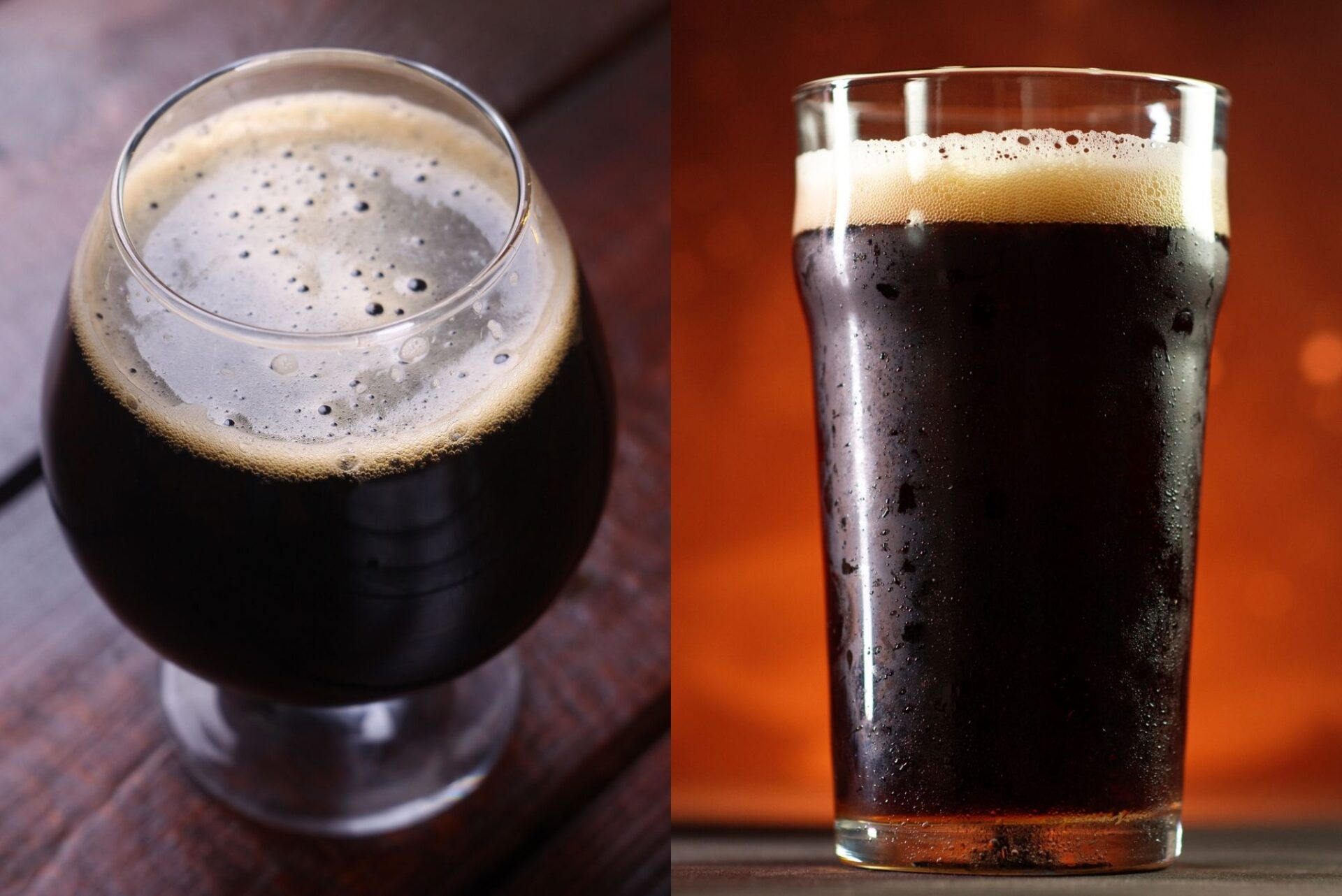Beer friends who enjoy the odd pint of the “black stuff” often ask me the difference between a pint of stout and a good old-fashioned pint of porter. While they may both look the same, beer aficionados (or beer nerds as my wife calls them) will argue they are two very different types of beer.
By looking at this picture, can you tell whether it’s a stout or porter? Over the past decade or so, the two names have become intertwined in brewing circles; some beers are even called a porter stout! Although some may tell you they prefer a stout over a porter, it’s pretty hard for them to explain the differences. It’s just a case of personal preference.
`So how do we solve this mystery? Many beer drinkers would say it doesn’t matter, but you’ve ended up here for some reason, so I assume it matters to you. Let’s start at the very beginning with a quick history lesson to get to the bottom of the difference between these two beer styles.
Brewing Porters & Stouts: Origins, History
Porters are, without a doubt, the old grandpa of modern-day stouts. Beer historians trace the first porters back to eighteenth-century England.
Early reports suggest it was first produced or mixed in the rowdy pubs by barmen blending lighter hoppy beers with older aged beer to produce a darker medium body beer. The English brewers are good at that sort of thing. Just go into any English pub and look at all the concoctions made using beer, like a Black and Tan, a Brown and Bitter, and even one called a Mickey Mouse.
As porters’ popularity rose, the breweries would reverse engineer the recipe and use malted barley with a good measure of hops and top-fermenting ale yeast. As brewers started tinkering with the recipes, they would add different ingredients and boost the alcohol content. Many of these stronger porters were referred to as a “stout porter,” hence the beer style stout was born!
A New Stout is Born!
Whereas porters beers originated in London, the experimentation of Irish brewers led to a stout revolution in the nineteenth century. Without a doubt, the most popular stouts still come from Ireland, including the much-beloved Guinness.
Confused?? Yes, you could argue that a stout is just a more robust version of a porter, but stout has its own distinct category, and you are more likely to see the word stout on the beer menu of today’s craft brewers.
Contemporary stouts are often spotted in the wild, including Irish Stout, American Stout, Russian Stout (also known as Imperial Stout), and even a chocolate stout.
So now we know which is the oldest, what are the other biggest differences between Porter and a stout?
Appearance of a Stout vs. Porter
Although both are referred to as black beers or dark beers, a modern porter will be more of a deep brown in color. Stouts are almost always a much darker black color. Porters will use dark malts or a brown malt to give it that characteristic brown color, while stouts use unmalted but roasted barley (almost burnt, some would say) for a distinctive black color.
So difference number one is brown porter versus black stout. Unfortunately, this can often be misleading as it is such a subtle difference. You can find some porters using dark malts, which makes them almost a black color, and vice versa for stouts that add ingredients like chocolate malt for a browner color! DOH!
Flavor of Stouts vs. Porter
Surely, you would think that the flavor of each type of beer should help show their differences. But unfortunately, the lines are blurred here, too.
A Porter beer is usually much sweeter than stout, but this can depend very much on the darkness of the grain used and the addition of malts and hops. A porter will often also have spicy or bitter undertones and will tend to be more full-bodied than its stout counterparts.
By comparison, stouts will have more of a bitter taste and a dark roast coffee flavor, which comes from using roasted barley, which is also unmalted. Black barley, or the darkest grains of barley, will also add to the drink’s bitterness, although many stout brewers will experiment, and some stouts now have hints of chocolate.
To make matters more confusing, some of the modern versions of porter will use a different brewing method to create a stronger porter (or stoutness) than stout. Adding roasted grains to a porter will add a roasty maltiness, a flavor profile easily mistaken as a type of stout even though the label on the tap still says porter.
Difference Between Porters
The Beer Judge Certification Program Style Guide (BJCP) recognizes many different categories or styles of porter, the common factor being a more robust porter than stout alternatives. Popular types of porters include:

- English Porter – The original porter as found in 18th century England. A standard porter should contain absolutely no burnt flavor or roasted grain aromas. An English Porter will range from medium-light to dark brown on the beer color spectrum.
- Baltic Porter – Originating from Europe, this is a strong Baltic porter beer brewed with lager yeast and cold fermented. Its almost black color comes from the darker grains or black malts used, which again do not have any burnt characteristics.
- American Porters – This American craft beer is typically stronger than English porters. The BJCP describes it as a substantial and malty dark beer with a complex dark malt flavor.
- Smoke Porter – A very different style of porter that confuses the difference between stout and porters. Although it won’t use unmalted barley like a stout, this malty dark beer will have an assertive smoky aroma and flavor from added toasted ingredients.
Deschutes Black Butte Porter, America’s top-selling craft porter, is a prime example of the porters being created today and uses a variety of malts, wheat, and chocolate for a complex flavor.
The Stout Varieties
While originally brewed as a variation of a porter, stouts are much more popular with today’s craft brewers than porter beers. We all know Guinness as a stout, but what other classifications of stout are out there, and what makes them a stout, not a porter?
Stouts will often leave a bit more room for experimentation in the brewing process of these dark beers. Below are the most popular stout definitions officially recognized by the major style guides, including the aforementioned BJCP.

- Irish Stout – The most famous stout of them all, also commonly referred to as a dry stout, this dark black beer has a predominantly coffee flavor.
- Sweet Stout – These stout beers have a coffee flavor but can be much sweeter full-bodied drinks, more like a coffee and cream or sweetened espresso flavor.
- Imperial or Russian Stout – Big, bold flavors dominate this stout variety, often with added dried fruit flavors.
- Foreign Extra Stout – Similar to an Irish Stout, the Export version can be considered an upgraded dry stout. With higher levels of bitterness, they can be higher in alcohol content but still with that roasty malt flavor.
None of the stouts listed above use any malted grains as a rule, so that could be classified as one major difference between a stout and a porter.
Porter vs Stout – The Verdict
This is the challenging bit. To most beer newbies, it’s hard to explain the difference even after looking at the history, the flavor breakdowns, and the different varieties of stouts and porter beers. The craft beer revolution has led to so much experimentation in the stout and porter beer recipes that it has blurred the lines more than ever before.
In general, you could say that the biggest difference between the two beers is the use of malted barley or grains in porter recipes and unmalted barley in a stout. That maltiness can often give porters a sweeter, more chocolate character than coffee taste, rather than the bitterness and coffee flavor you will find in a traditional stout.
The toasting of the barley, almost burning, some would say, in a stout, gives it a dark color and a roasty character, almost like a coffee. Although many of today’s porters will often add roasted barley for a more complex smoky flavor.
At the end of the day, choose your preferred beverage, and don’t worry too much about whether it’s stout or porter – it seems nobody else cares too much, either. But feel free to use some of the points I have made in this article when the debate arises at your next meeting of beer geeks.

